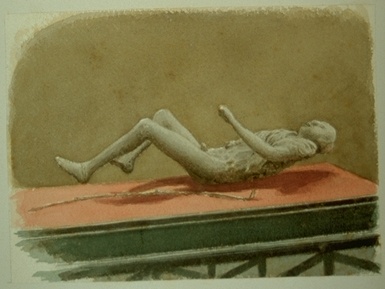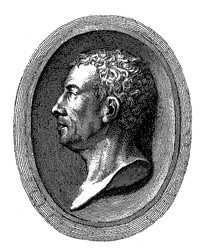Das Aquarell zeigt den Gipsabguss eines Mannes, der bei dem Ausbruch des Vesuvs 79 n. Chr. in Pompeji am. Das Skelett wurde 1875 in einer Ascheschicht in 4 m Höhe über dem Boden der Stabianer Straße entdeckt
Als 1863 G. Fiorelli die Grabungsleitung in Pompeji übernahm, begann eine systematische Erforschung der Stadt. Dabei wurden auch die im vulkanischen Material erhaltenen Abdrücke der beim Ausbruch des Vesuvs erstickten Menschen mit Gips ausgegossen.
Der von Emil Presuhn publizierte Abguss wird im Museum Pompeji (Inv.-Nr. 43b) aufbewahrt.
Die Zeichnung stammt von Geremia Discanno. Die Chromolithographie für den Druck fertigte Vittori Steeger an.
Publiziert in: Pompeji. Die neuesten Ausgrabungen von 1874-1881, hrsg. von Emil Presuhn, Leipzig 1882, IV 10.
Der Druck ist signiert.
(Stephanie-Gerrit Bruer)
en

